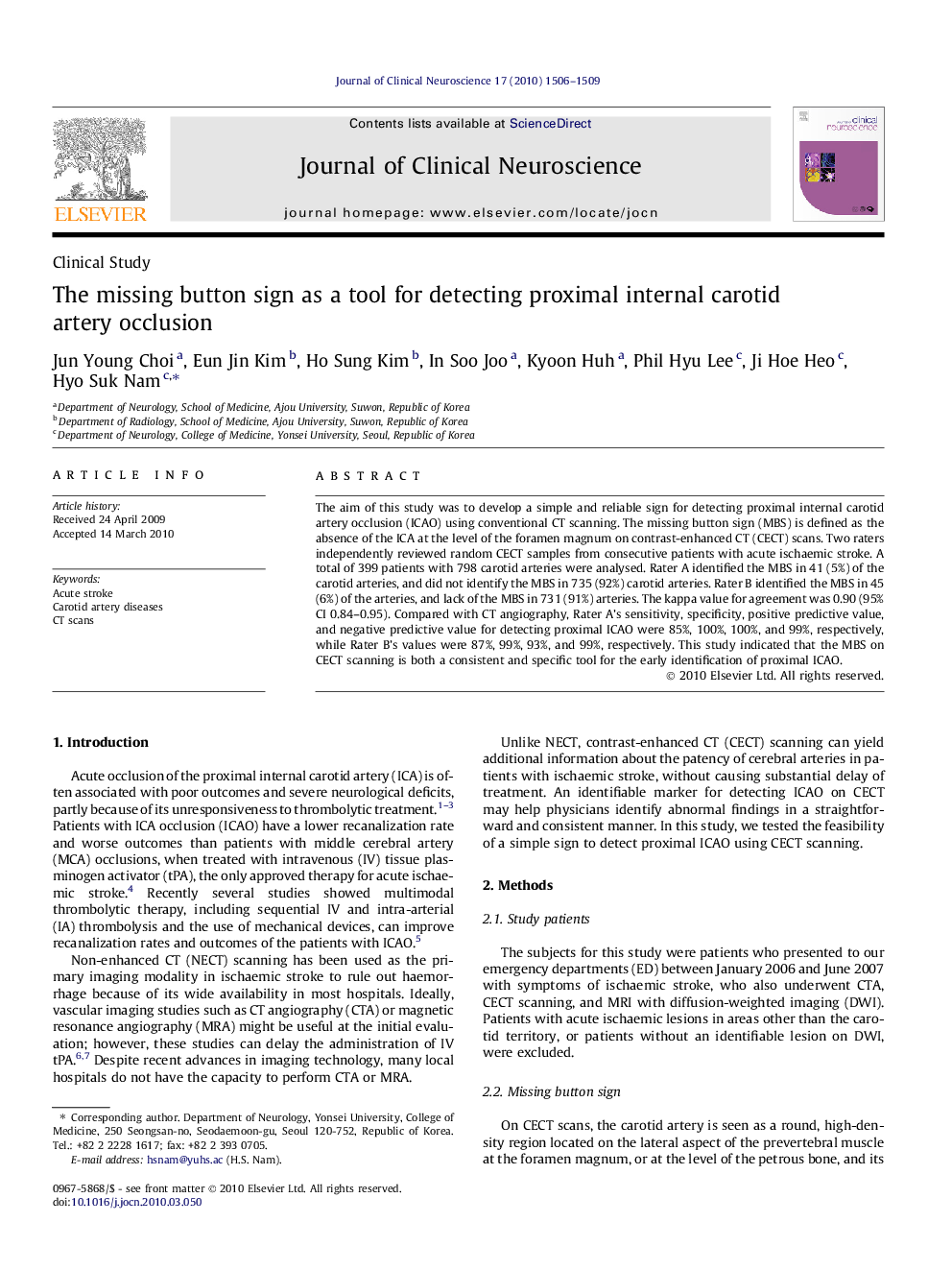| Article ID | Journal | Published Year | Pages | File Type |
|---|---|---|---|---|
| 3062413 | Journal of Clinical Neuroscience | 2010 | 4 Pages |
The aim of this study was to develop a simple and reliable sign for detecting proximal internal carotid artery occlusion (ICAO) using conventional CT scanning. The missing button sign (MBS) is defined as the absence of the ICA at the level of the foramen magnum on contrast-enhanced CT (CECT) scans. Two raters independently reviewed random CECT samples from consecutive patients with acute ischaemic stroke. A total of 399 patients with 798 carotid arteries were analysed. Rater A identified the MBS in 41 (5%) of the carotid arteries, and did not identify the MBS in 735 (92%) carotid arteries. Rater B identified the MBS in 45 (6%) of the arteries, and lack of the MBS in 731 (91%) arteries. The kappa value for agreement was 0.90 (95% CI 0.84–0.95). Compared with CT angiography, Rater A’s sensitivity, specificity, positive predictive value, and negative predictive value for detecting proximal ICAO were 85%, 100%, 100%, and 99%, respectively, while Rater B’s values were 87%, 99%, 93%, and 99%, respectively. This study indicated that the MBS on CECT scanning is both a consistent and specific tool for the early identification of proximal ICAO.
